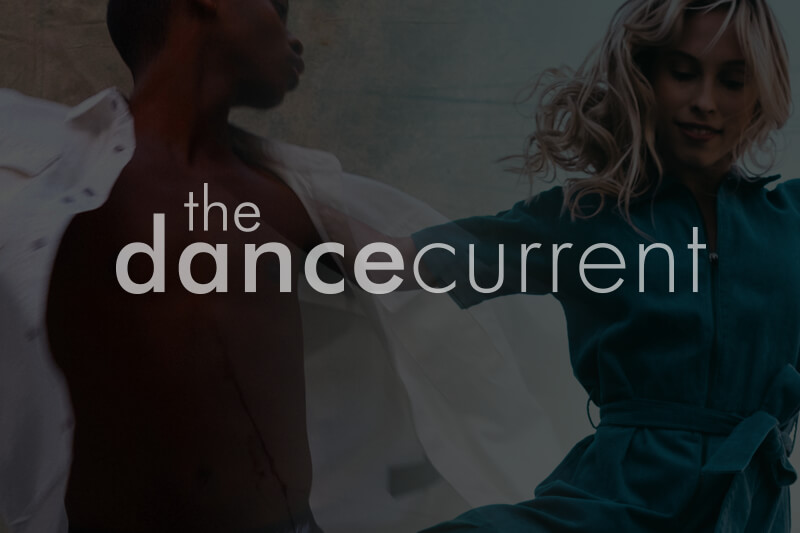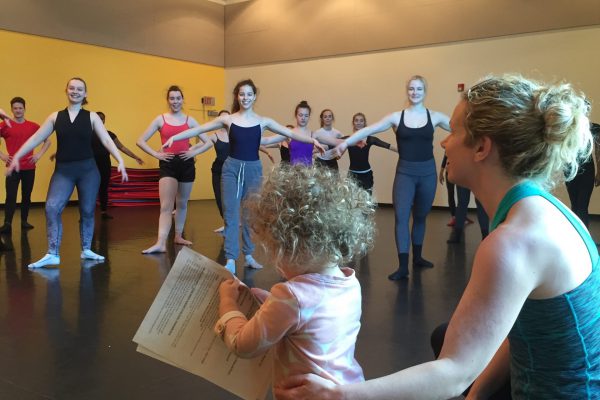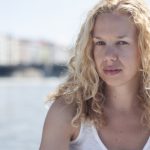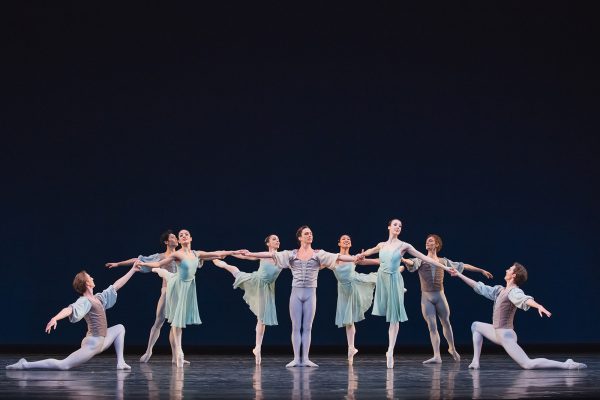The arrival of Progress Festival (February 4-15), a new international performance festival in Toronto, took an existential turn for the city’s stage artists, and in particular its dancers and choreographers. Among comparisons to other performance ecosystems around the world, an oddly elemental debate was taking place. What is dance?
On the surface, there doesn’t seem to be much point in asking such a hopelessly broad question. But in the context of how dance fits into the mix at a genre-bending festival like Progress, the question is deeply relevant. For festival organizer Michael Rubenfeld, who has been largely responsible for integrating dance into SummerWorks (of which Progress is an offshoot), the issue is both practical and personal. Eight different companies in Toronto each invited one show — some Canadian, some international — to bring to the festival, and for his curatorial contribution Rubenfeld chose Aharona Israel’s movement-based theatrical performance Marathon. Much of the wrangling over definitions of dance circled around this contentious work.
Marathon troubled audiences for several reasons. It is visually disorienting and tonally rather morose, as characters regress into childlike fears and animosities through accumulated low-level feelings of futility and desperation. Thematically, the work expresses the grinding existential stress of life in Israel, but it leaves out the experiences of the country’s Arab and immigrant populations. (One reviewer from The Globe and Mail excoriated the show for this perceived lack, which made me wonder if Israeli artists are expected to make work about one subject, with one frame.) Marathon isn’t only politically aloof, however, it’s also elusive as a performance, which made it hard to respond to, especially for anyone hoping to see something like a dance.
Thankfully, the questions about Marathon and the role of dance at Progress were given a formal outlet and a spot on the schedule, at a roundtable discussion titled “Dance as Metaphor, Language, and Lens,” hosted by Dancemakers co-directors Emi Forster and Benjamin Kamino. They were joined by Israel, Dancemakers resident artist Zoja Smutney and Tunisian theatre artist Meher Awachri, whose stunning solo performance D-SISYPHE was itself more theatre than dance, but more dance than not.
The discussion struggled to get off the ground, as it was immediately overtaken by the participants’ palpable frustration with the whole project of constraining or categorizing performance. Forster introduced the conversation with a quotation from Kamino, who offers the idea that “dance is the possibility of languagelessness.” The proposition failed to capture any excitement, however, and certainly not for the two presenting artists on stage, who each relied heavily on spoken language in the construction of their works. Liberation from the limits of language was not an ambition they shared with Kamino.
But as exasperating as it may be to delineate boundaries around what dance can or cannot be, for the artists present the problem of language is at the heart of whatever expectations might threaten the production and appreciation of dance. Dance communicates differently when it uses words. In a performance context, spoken language changes not just what we experience, but how we experience it.
Marathon attempts both forms, activating two kinds of attention simultaneously: perceiving awareness and grasping intelligence. On the one hand, Israel fashions the performance out of gestures borrowed from everyday life in her home city of Tel Aviv, which she separates from their context and distils into a stylized essence. Once drained of spontaneity and converted to ritual, she re-inserts these quotidian movements into the blunt circumstances of the performance, given by the title and imprinted in large letters on the floor of the stage: 42.2 kilometres of running.
In fact, the performers only cover about six or seven kilometres over the course of the show, but run they do, with stoic determination that slowly devolves from lap to lap. Symbolic gestures interrupt their swirling movement every twenty or thirty seconds, each one accompanied by a shouted word or phrase. For example, the Hebrew word shiksa, sometimes called out by Orthodox Jews when an immodest woman is spotted in public, causes the performers to shield their eyes and cut quickly backwards in shuffling steps, before rejoining the circle.
The broad metaphor of the marathon, the emblematic gestures, the simple utterances laden with poetic significance — for audiences, these are better absorbed than they are understood or explained. But concurrent with those suggestive enactments, Israel also transmits her intention via didactic storytelling, which audiences are accustomed to parsing for layers of meaning. As Awachri observed, “Theatre constantly asks itself, ‘What are you trying to say?’” Operating on both channels of theatrical declaration and intuitive suggestion is a complicated trick, for audiences and for performers. (In her workshop “Intelligent Bodies,” offered over two days during the festival, Israel coached participants on how to achieve this “multi-focused approach.”) At best, it feels rich and varied, but at worst, it’s indecisive and disorienting, like toggling a switch.
Ultimately, Marathon suffers from its theatrical ambitions, in part because it doesn’t succeed as theatre — the exertion causes the performers to labour over their lines, giving their delivery a stilted pacing that’s more exhausting than watching them run for an hour — and also because the overtness of the drama undermined the choreography. As Smutney said to Israel at the roundtable, “Your choices were about directly saying something to people in a way we will understand.” It’s hard to open up the mind to the subtler intimations of choreography while being bombarded by meaning.
Eventually, the roundtable interrogation of dance folded the question of language into the more fruitful metaphor of space. Smutney indicated that she experiences dance as a kind of spaciousness, and linked this sensibility to the expansiveness of poetry. Israel, who originally trained as an architect before turning to choreography, has mastered this principle. She is strongest when sculpting spatial resonance. It would have been good to enter the environment of Marathon and move among those echoes, but it was already too crowded. Constraints aren’t always the enemy of openness; sometimes they’re exactly what make it possible.
Tagged: Choreography, Contemporary, Performance, ON , Toronto





